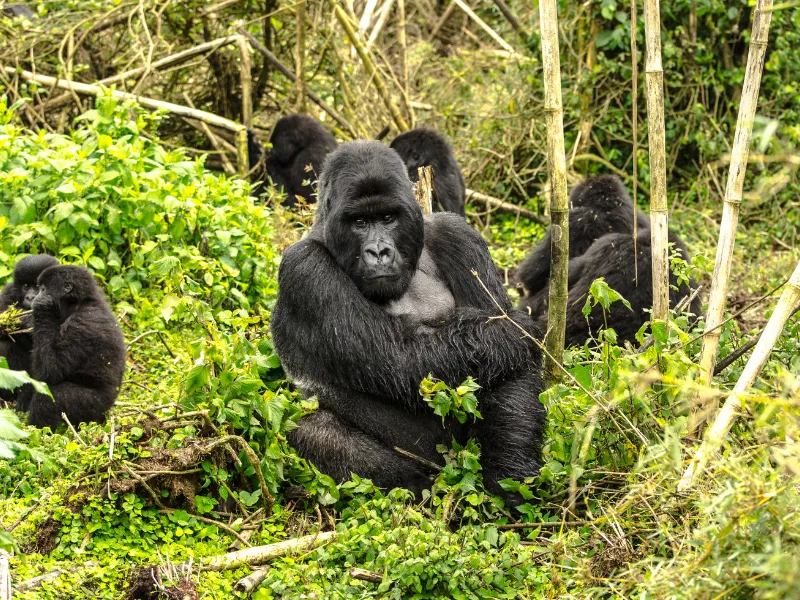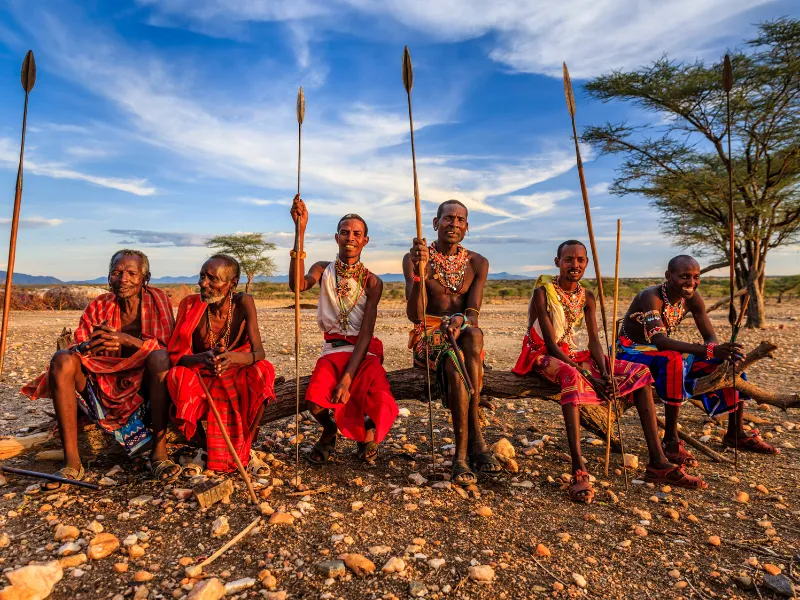incredible wildlife
Tanzania
Capital
Dodoma
Currency
TZS (Tanzanian Shilling)
Language
Swahili, English
Time Difference
UTC+03:00
Wild, Vast, and Untamed
Tanzania offers epic scenery and unforgettable wildlife moments—from the Serengeti’s great herds to the idyllic shores of Zanzibar. With Iconic Travels, every Tanzania trip is handcrafted to immerse you in raw beauty, comfort, and cultural depth.

Why Travel to Tanzania with Iconic Travels?
The Serengeti + Ngorongoro: We tailor multi-day safaris to maximize sightings and minimize tourist traffic.
Zanzibar Add-On: Balance adventure with barefoot luxury on Zanzibar’s pristine beaches.
Photographer’s Paradise: Iconic landscapes, dramatic light, and abundant wildlife await.
Off-the-Beaten-Path Options: Want something unique? We offer Selous, Ruaha, and chimp trekking in Mahale.
Top Experiences in Tanzania
From the endless plains of the Serengeti to the turquoise waters of Zanzibar and the traditions of the Maasai, Tanzania offers Africa in its most untamed and enchanting form. With a strong conservation heritage, it’s a dream destination for those craving raw, authentic adventure.
Tanzania Safari Packages
Whether you're celebrating a milestone or seeking a much-needed escape, let this inspiring selection of favorites guide your journey.
Iconic Travels Reviews
Discover how our services have created memories that go beyond the ordinary.
African Safaris FAQs
You’ve got questions—we’ve got answers. Here are some things most travelers want to know before they book.
1. What's included in an Iconic safari?
Everything you need—custom itinerary, luxury stays, private guide, park permits, and transfers. More details can be found on specific itinerary pages.
2. When is the best time to visit?
It depends! We’ll guide you based on what you want to see—wildlife migrations, gorilla trekking, or dry season game drives.
3. Do you offer custom tours?
Yes. Every safari we create is custom-built around your timeline, style, and interests.
4. How physically demanding is gorilla trekking?
It’s a moderate hike. We tailor the experience to your fitness level and work with guides to ensure you're comfortable.
5. Can I combine countries in one trip?
Absolutely. We often create multi-country itineraries—Uganda, Rwanda, Kenya, and Tanzania—seamlessly blended.
Ready to Explore More?
Our travel experts are ready to start creating your customized trip.
Tanzania Gallery
Vast savannahs, legendary wildlife, rich cultural traditions, and breathtaking landscapes create the perfect backdrop for your Tanzanian adventure.






The Iconic Blog

Your Ultimate Guide to Experiencing East Africa's Great Migration!
Imagine a world where millions of hooves thunder across vast plains, a spectacle so grand it's visible from space. ...more
Destination Guides
August 04, 2025•7 min read

Tanzania: From Safari Icons to Seaside Dreams
Uncover the magic of the Serengeti, Ngorongoro Crater, and Zanzibar in one seamless, soul-stirring journey through East Africa’s most legendary landscapes. ...more
Destination Guides
July 04, 2025•4 min read

Kenya: The Land of Timeless Safaris & Sky-High Escapes
From the Great Migration in the Masai Mara to coastal elegance in Diani Beach, discover why Kenya is the ultimate playground for high-end African adventures. ...more
Destination Guides
July 04, 2025•2 min read

Rwanda: Where Culture, Conservation & Luxury Converge
Track mountain gorillas in misty forests, attend world-class events, and explore Rwanda’s rising luxury travel scene, all in one bold, beautiful destination. ...more
Destination Guides
July 04, 2025•4 min read

Uganda: The Crown Jewel of African Safari Experiences
Experience Uganda’s unforgettable mix of gorilla trekking, chimpanzee tracking, and scenic safari adventures. A luxurious journey through wild beauty, crafted the Iconic way. ...more
Destination Guides
July 04, 2025•2 min read
Need More Information?
Get our detailed brochures and destination guides.
Travel Planner or Agency?
Let’s work together to deliver extraordinary East African journeys.
Destinations
Company
Follow Us
© 2026 Iconic Travels. All Rights Reserved.























